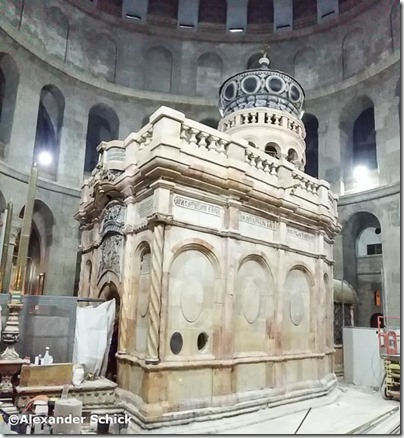A tomb with a number of well-preserved frescoes from the Hellenistic or Early Roman periods has been discovered in northern Jordan.
A dozen sculptures recently unearthed at Perga are now on display in the Antalya Museum.
The BBC runs an interesting story on the Muslim families that lock and unlock the Church of the Holy Sepulcher each day.
“A crew of facial reconstruction experts have successfully recreated the face of a male who lived in the Biblical city of Jericho.”
Scanning technology has provided 3-D images of unwrapped mummies from ancient Egypt.
“A pair of mummified knees are most likely those of the famously beautiful spouse of Pharaoh Ramses II.”
James Davila considers the reemergence of the Jordanian lead codices and links to an insider perspective.
Archaeologists working in the Wadi Feinan region of Jordan believe that they have found evidence of the world’s first polluted river.
The breed known as “Jacob’s sheep” have returned to Israel.
The Jerusalem Post runs a story on Douglas Petrovich’s theory that the earliest alphabet was Hebrew.
Recent damage to the ancient site of Mari is discussed by archaeologist Pascal Butterlin in a
short video (in French).
Relics looted from Syria’s ancient city of Palmyra have been recovered in Switzerland.
“Radiocarbon dating remains a reliable tool if it is supplemented by 13C measurements.”
“Why would the Lord first announce the Messiah’s birth to lowly shepherds?” Wayne Stiles explains.
In light of the recent excavation of the Church of the Holy Sepulcher, Gordon Govier at Christianity Today explains why there are two competing sites for the place of Jesus’s burial.
Daniel Wallace was one of the bidders and he provides more details. I wonder how many of the
The Westminister Bookstore has a big sale on the
ESV Bible Atlas, described by them as “‘National Geographic’ meets world class Biblical Scholarship.” You can look inside
here.
HT: Charles Savelle, Explorator, Ted Weis, Agade, Joseph Lauer
